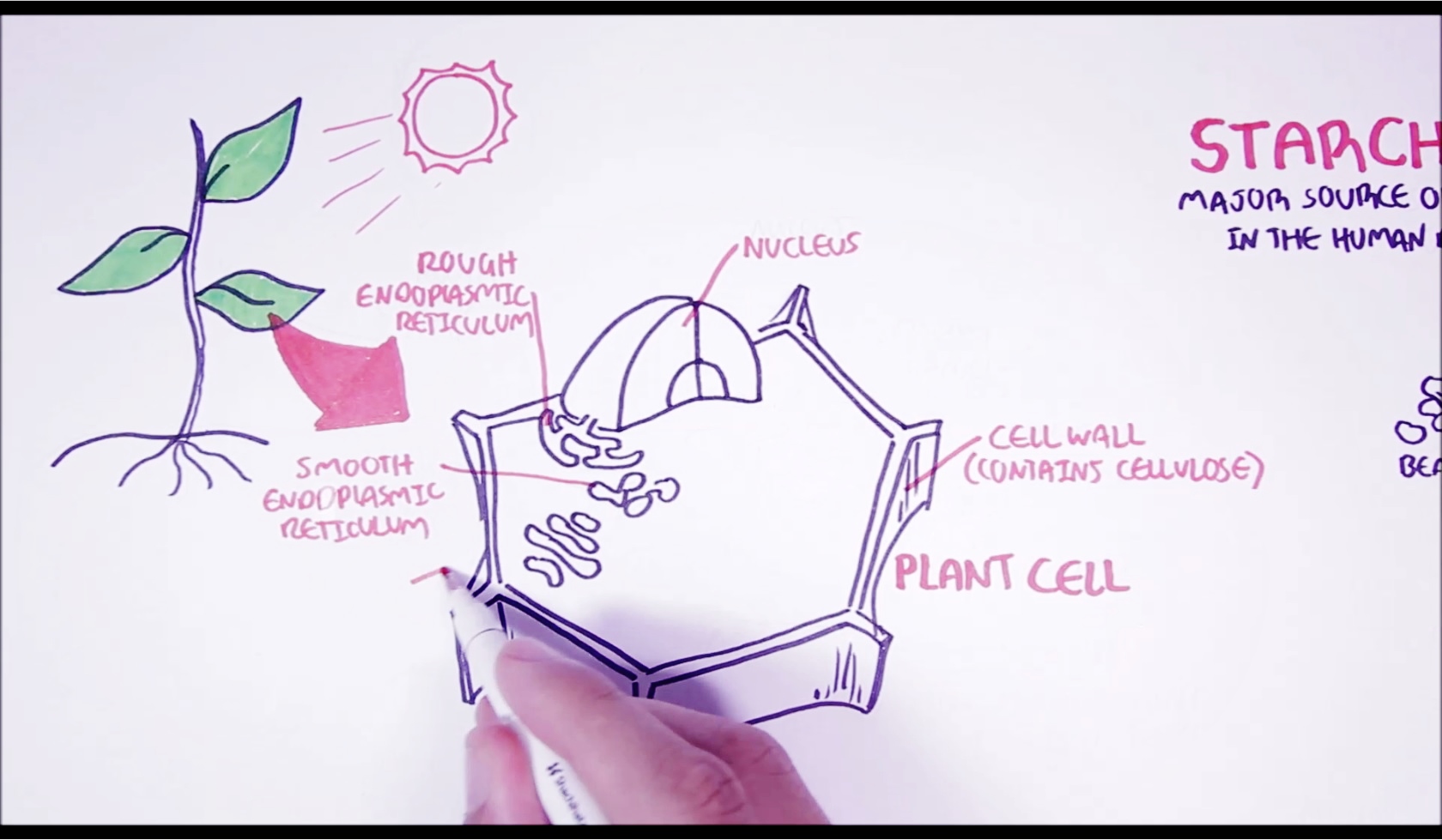
Plants eat sun, plants make giant, squiggly cell. Simple.
Welcome to the second installment in our four-part animated series on the digestive system.
Today we’re talking about starch – so let’s start with some background.
Almost all of our food comes either directly or indirectly from plants: directly, when we are eating plant parts (leaves and stems), their storage organs (vegetables), their burgeoning embryos (fruits), or their offspring (seeds and pulses), and indirectly when we devour animals that ate plants themselves.
Plants have many components that can be used by our bodies. From their seeds we obtain amino acids to build muscles and upkeep our own cells. And by eating plants and therefore plant cells, we digest their DNA, break it down, and recycle it to use in our own DNA. Some elements and minerals such as phosphorus are necessary for our survival.
But plants need phosphorus just as much as us. Plants get phosphorus via their roots, which get it via the soil (which is composed of pulverised phosphate-rich rocks). Whether we eat the herbivores that are feasting on the plants, or go straight to the plants, we are replenishing our phosphorus reserves to make more cells. All of this phosphorus, used in our very genetic make up, is ultimately derived from soil and rocks — the Earth. Hippies sure know their biochemistry.
Among many of the nutrients created by plants, for plants, starch is a fundamental one.
So what’s the deal with it?
‘Sup with starch?
In this video, we take a look at starch and the role it plays in our digestive system. What is it? Where’s it come from? Why is it important?
But that’s not all there is to know about starch. When our own bodies consume too much food, instead of excreting it and wasting those precious resources, our body converts those nutrients into storage materials for later use on a rainy day. If we ingest more simple sugars than we need, for example, our bodies will take those components, transform them into fats, and store them away in our body. Then, when food is scarce, those fats can be broken down and used as life-preserving energy.
Plants do this too. Instead of fat, plants use ‘starch’, and instead of love handles, plants have potatoes and yams. Where animals eat plant sugars, plants make plant sugars from scratch. If they make too much, they’ll fold up the sugars into starch and store it in their tubers. To the plants existential dismay, hungry animals — too inept to make their own sugar — come fossicking for the plants’ precious starch reserves.
Some plants protect their starch with lethal solanine, the toxic chemical found in green potatoes, while others forfeit their reserves to rabbits. Ehh, what’s up doc?
Nonetheless, once the starch is consumed by us hungry herbivores, it must be broken down into its constituent saccharine parts. For true herbivores, rabbits and cows and the like, this is not such a problem. For more omnivorous creatures such as ourselves, starch is a hard nut to crack. Our bodies have evolved elaborate mechanisms to get the most out of starch, but, as always, we must rely on our bacterial comrades to finish the job for us.
For more information on starch, its ultimate fate in our insides, and why we need it more than it needs us, Check out these videos!


24th January 2015 at 3:41 pm
Reblogged this on Endometriosis Wellbeing and commented:
I love carbs and despite all the hype against them, your body needs them. Here’s the science behind carbs presented in a very cool video by the CSIRO.